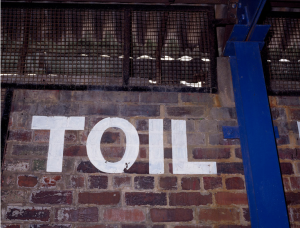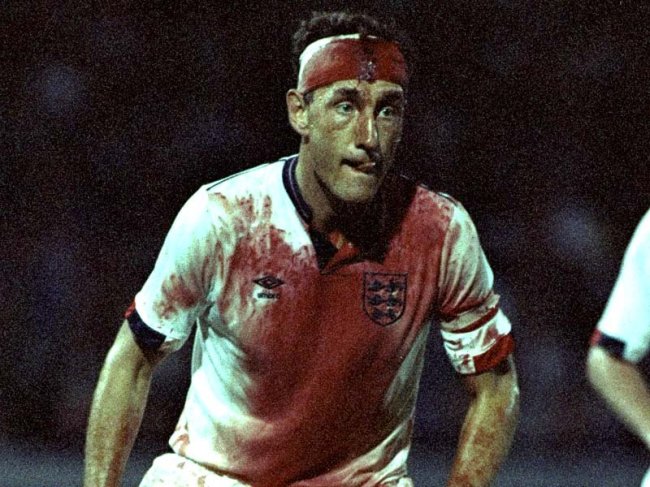http://homesoffootball.co.uk/ – Stuart Roy Clarke’s website, featuring a small gallery, a feature film and the link where you can buy his book.
http://inbedwithmaradona.com/gallery/2013/11/10/where-the-heart-is-by-stuart-roy-clarke – The link to football subculture website ‘IBWM’, where I first discovered Clarke’s work. Check it out.
British football photographer Stuart Roy Clarke belongs to a valuable genre of unique artists.
To paraphrase his words in an interview, Clarke never wanted to start small and become big – he wanted to explore both extremes and everything in between.
Clarke cites the Hillsborough disaster of 1988 as the main motivation for him starting his gallery. For those who don’t know the story, 96 Liverpool fans were killed when a heaving away crowd at Sheffield Wednesday’s Hillsborough Stadium collapsed a stand through sheer weight of numbers. Administrative and police errors led to the loss of life, and also to the loss of something once considered critical to European football: Standing room. The disaster was the catalyst for the introduction of seated-only football grounds around Britain, and this coupled with the might of the Premier League’s pounds has seen a light go out in the terraces of England’s elite clubs.
This is where Clarke steps in with his collection, a moving museum of more than 100,000 photos captured on film paying testament to an era that has gone by.

Aptly named ‘The Homes of Football’, Clarke’s gallery juxtaposes images of the worlds biggest matches, attended by tens of thousands, with those of non-league games where the players outnumber the crowd. He manages to perfectly capture the charm of the sport within Britain, where almost every postcode has a football side or 3, and the mass appeal of the sport itself around the world. All it takes is a ball (or something shaped like one) and a set of goals (who hasn’t played football in the park with their jackets masquerading as posts) – anybody can play, anywhere.
What perhaps makes Clarke’s collection so brilliant is the emotion he captures within his photos. Nobody will ever be able to justify why football turns mild mannered people into manic supporters – but Clarke manages to capture the inherent humanity that makes the sport what it is. From a picture of two elderly Newcastle and Sunderland loyals sharing a handshake across a dividing line of police, to a snow-covered reporter speaking to a single camera at Wycombe, to a ramshackle wooden shed doubling as a club store in Alloa – Clarke uses his camera to show us how far football obsession stretches.
Despite boasting probably the most competitive domestic league in the world, English football culture has become the target of European elitist comparison. Britain has never really played by anybody else’s rules – it values graft, loyalty and desire more than technique, but somehow still expects to win World Cups. Whilst the great Barcelona and Spanish sides of 2008-2012 will go down in history as perhaps the finest of all time – Britain has consistently rejected the chance to reform its culture at a grass roots level.
Fronted by Barcelona’s infamous La Masia academy, continental youth development has exploded to yield a generation of technically and tactically able players in Europe. Once considered Holland’s little brother, Belgium is reaping the rewards of their youth reformation with the emergence from nowhere of one the worlds best teams. Featuring the likes of Eden Hazard, Vincent Kompany and Romelu Lukaku – neutrals now rate Belgium’s side as on par with, or better than what the Netherlands can currently boast.
Despite this, probably my favourite image that I have seen in the gallery so far is a weathered brick wall at Blackburn’s Ewood Park with the word ‘TOIL’ painted in large white letters (above). Whether that’s a message of what is expected from the players, or simply the first part of the word ‘toilet’ is unknown, but it perfectly encapsulates what crowds of Britons who brave freezing, dark afternoons to attend matches demand from their charges. This image connects perfectly with another picture; this one of a mud-caked and rain-drenched Burnley player leaving the field of play after 90 minutes. Both images were snapped in 1991.
Both of these pictures tie in with the image (above) that is quintessentially British football. Terry Butcher in 1989 against Sweden, his England shirt stained with blood from a wound on his forehead after he continued to head the ball away from the goalmouth.
Stuart Roy Clarke’s images symbolise what football is truly about to me, and I hope my readers enjoy them too.
